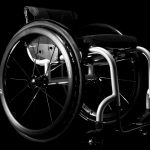Disability Facts & Figures Report
The Papworth Trust have recently published the 8th edition of their Disability Facts & Figures report. The report this time has focussed on the key areas of employment, social care and housing as the Trust believes that they hold the greatest inequality for disabled people.
The report is a comprehensive search into the latest statistics on all aspects of disability. It uses information from all the most recent surveys and reports, as well as data from other charities.
Employment
In the area of employment, disabled people are twice as likely to be unemployed than non-disabled people. The impact of this is happening earlier as well with disabled people four times more likely to be out of work by the age of 26, than non-disabled. Early intervention was found to be the key in preventing people falling out of work in the first place.
The report also revealed that the attitude of employers plays an important part with 1 in 5 saying they would be less likely to employ a disabled person. Part of the reason for this may be down to the anticipated cost of being able to accommodate a disabled person in their workplace. But, hopefully the recently announced changes to the Access to Work scheme will help to reduce this as a factor in coming years.
Social care
The report found that carers are currently providing care worth £132 billion a year – the equivalent of the UK’s total healthcare annual spend. This care is being provided by over 2 million people who have given up work to care.
Disabled people between the ages of 18 and 65 account for one third of social care users and the gap between social care costs and revenue is projected to reach £2.1 billion by 2019/20.
Housing
There are now 1.8 million disabled people with unmet housing needs, 580,000 of these are at working age. As a result of this disabled people are four times more likely to be unemployed or not seeking work.
Two thirds of single disabled people who are living alone are in poverty.
To read the full report click here.






Recent Comments